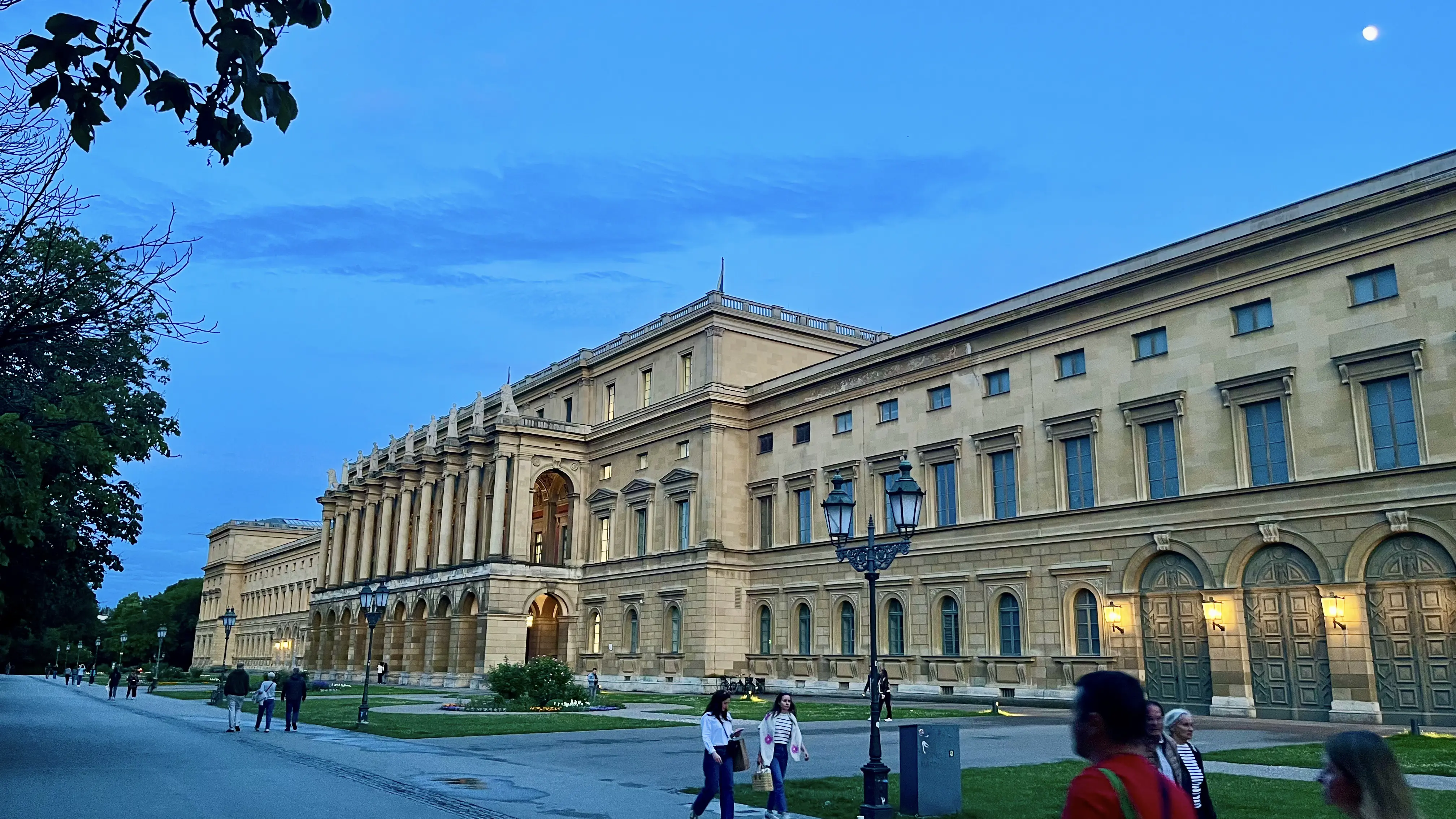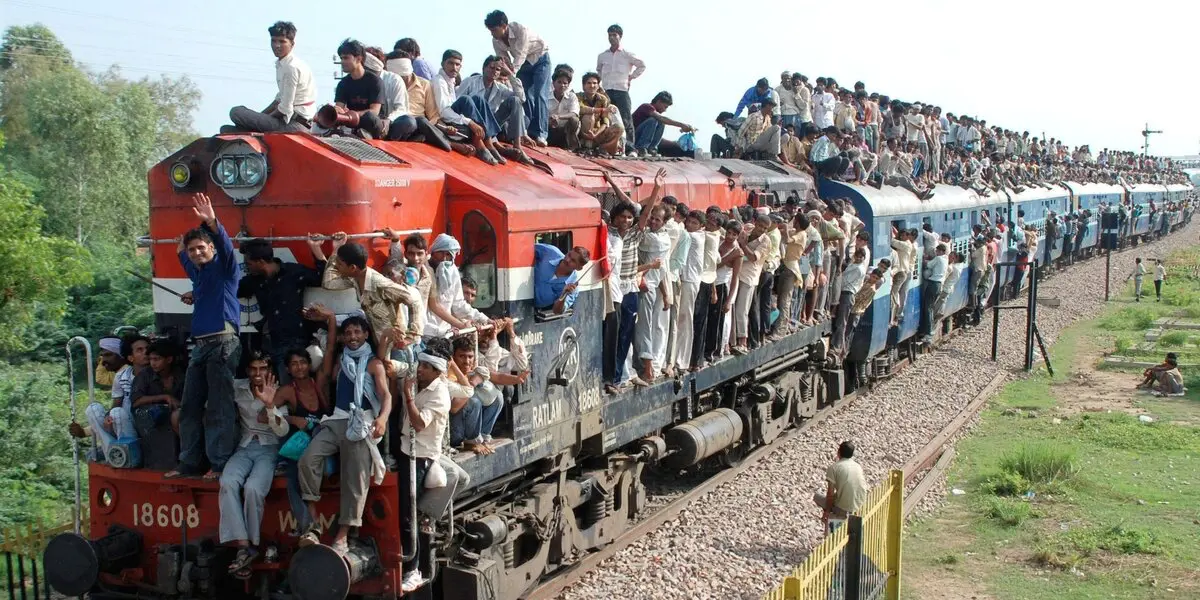Over the long weekend, thanks to Whit Monday being a public holiday in Germany, I decided to visit a friend who lives in Munich. I spent about three and a half days there and thought it would be a good idea to share my thoughts. I saw a lot during my stay, and since I live in Hamburg, I naturally started comparing the two cities. There are quite a few differences.
Before I go into the details, I should mention that I’ve been living in Hamburg for seven years, and this was my first time in Bavaria. Besides Munich, I’ve also been to Berlin and Magdeburg, but Munich gave me a very different impression. It felt worth writing about. I know German history and how divided the country used to be, so it shouldn’t be a surprise to see these differences. But still, I think people don’t talk about them enough. That’s why I think it’s a good idea to visit both Hamburg and Munich to really notice them. I’m not trying to say that one city is better than the other. This is just my personal take on what makes each place special. If you’re trying to decide where to live, keep in mind that I’m very biased towards Hamburg, so this might not be the most balanced view.
House of Wittelsbach
To understand the differences between Hamburg and Munich, I think it’s important to look at the history of both cities. When you visit them, you can really see how their past shaped what they are today.
The Wittelsbach family was a Bavarian dynasty that ruled Bavaria from 1180 to 1918. The blue and white pattern used in Bavaria today comes from the coat of arms of the Wittelsbach family. That light blue color is all over the city — you see it on the trams, street signs, and even on house number plates. Around the same time the Wittelsbachs rose to power, in 1189, Hamburg was given the status of a Free Imperial City by Frederick I “Barbarossa.” That made it an important trade city. If you check out Hamburg’s coat of arms today, it still carries the same style and the red color you see throughout the city, just like the blue in Munich.
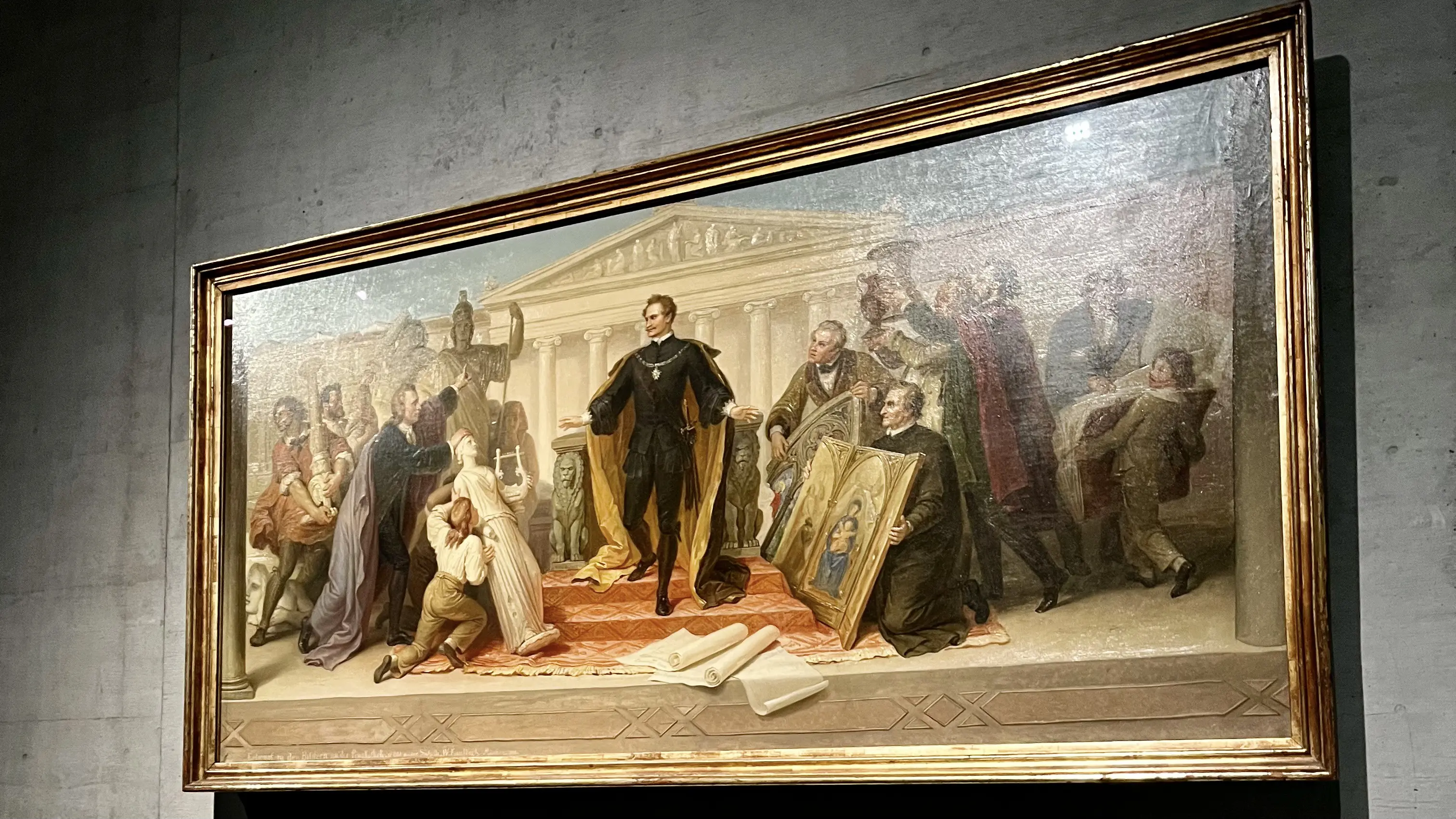
So while Munich was ruled by a single dynasty for centuries, Hamburg was more independent and focused on trade. I believe this played a big role in how the two cities developed. A city ruled by one family means power and money were more centralized. That can lead to big, impressive projects, but it also means the city grows in the direction that one ruling power chooses. A free trade city like Hamburg, on the other hand, had power and wealth spread out among merchants. That means more voices in the room and more variety in how the city grew.
There are also clear religious differences. Both cities were Catholic until the 16th century, but during the Reformation, Hamburg became Protestant. You can feel that shift even today. In Munich, the churches are bigger and more detailed. In Hamburg, they’re simpler and more minimalist. When I visited the Alte Pinakothek museum in Munich, I was surprised by how many paintings were focused on the Holy Mary and Christ. Religion still seems to be part of daily life in Munich — you notice it especially when older locals greet you with “Grüß Gott.”



You can also see the wealth of the Wittelsbach family when you jump ahead to the 18th century and look at King Ludwig I of Bavaria. While walking around the city, his name kept coming up. From Ludwigstraße and Königsplat to the museums like the Alte Pinakothek and Glyptothek — many of these were created or shaped by him. The Egyptian artifacts at the State Museum also came from his personal collection. It’s hard to imagine these things existing without someone who had the money and the interest in art and culture. He also moved one of Bavaria’s oldest universities to Munich, which became LMU Munich. Today, it’s considered one of the best universities in Germany. I think it’s fair to say that without Ludwig I, Munich wouldn’t be as developed and rich in culture as it is today.
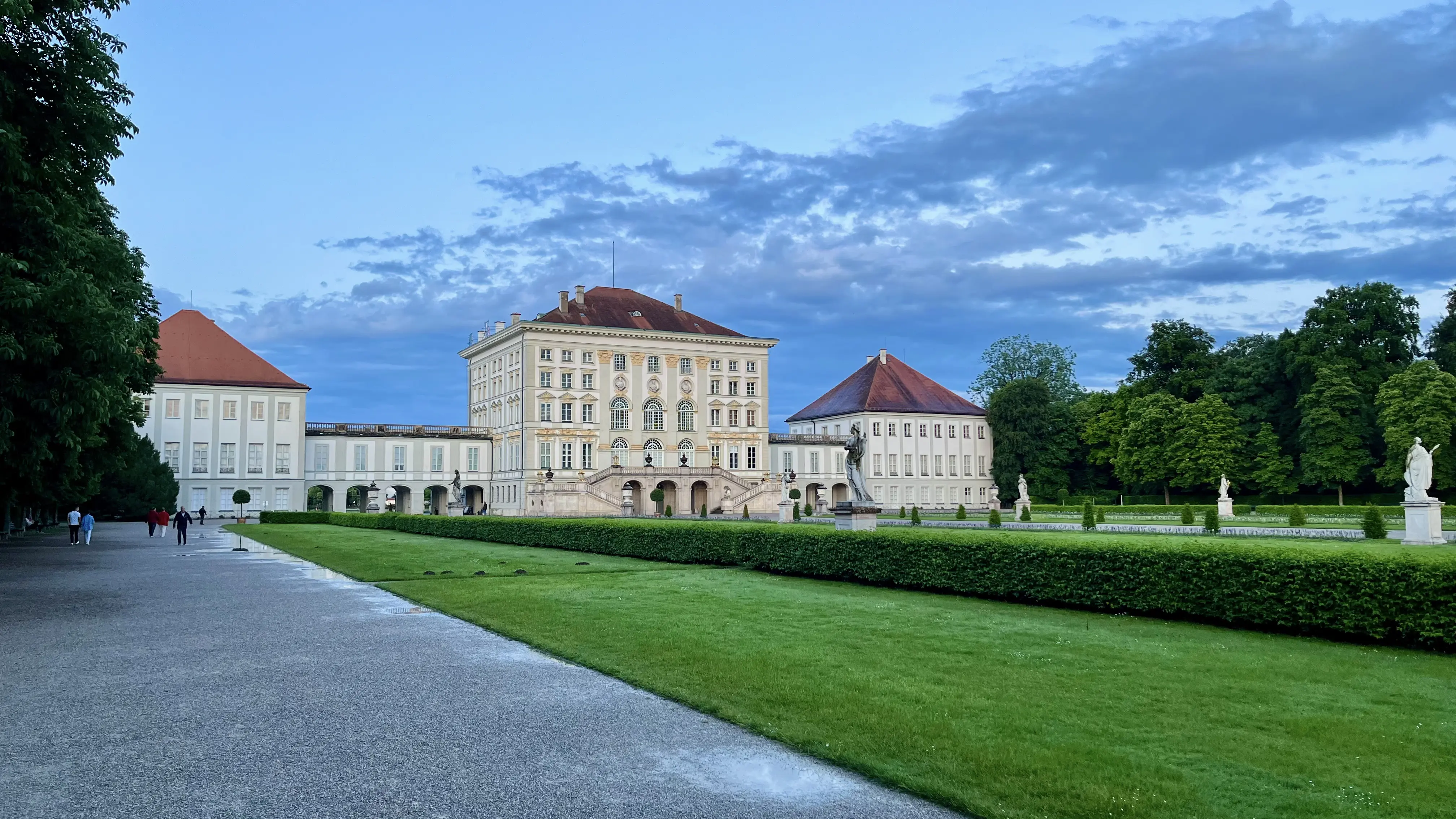
I also visited the Munich Residenz with its 130 rooms, where the Wittelsbachs lived, and the gardens of the Nymphenburg Palace, which served as their summer residence. I didn’t have time to go inside the palace, but the garden was beautiful. There were ducks, geese, and swans everywhere. The whole place felt very peaceful and well kept.
If I had to choose one word to describe Munich, I’d go with “wealth.” The wealth of the Wittelsbach dynasty and the way it shaped the city. That’s why I think you can’t really understand Munich without knowing this history — just like you can’t understand Hamburg without knowing about the Hanseatic League.
Nature
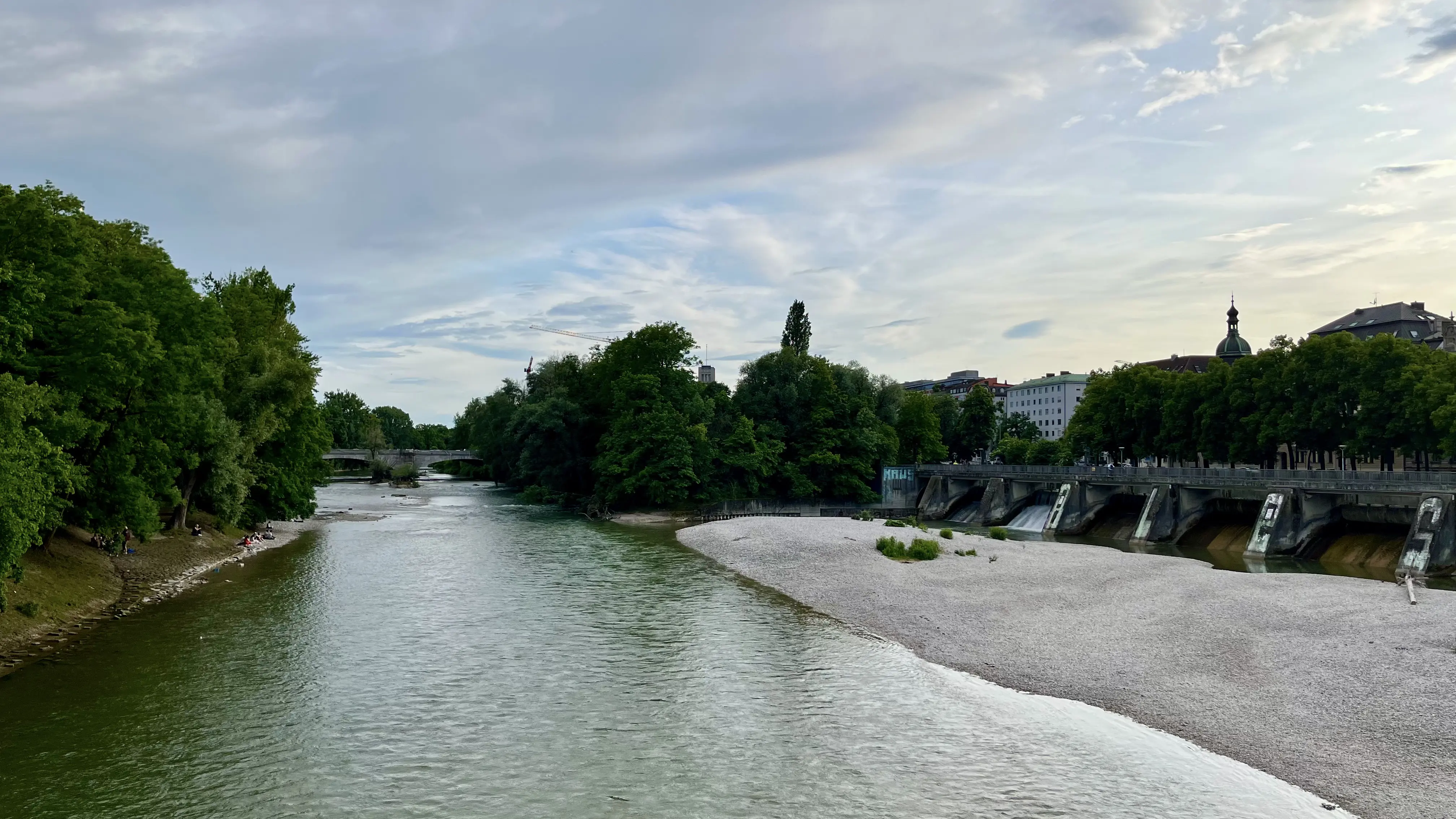
On the day I arrived in Munich, I went to the Isar River with my friend. I was really impressed by how clean the water was. Since it comes from melted snow in the Alps, you can actually see through the water — even the fish swimming inside. Maybe it’s not fair to compare it with the Elbe in Hamburg, but seeing such clear water was exciting for me. The flow of the river is also very fast. Of course, I should mention that the Elbe is much deeper than the Isar, so they are quite different in that sense.
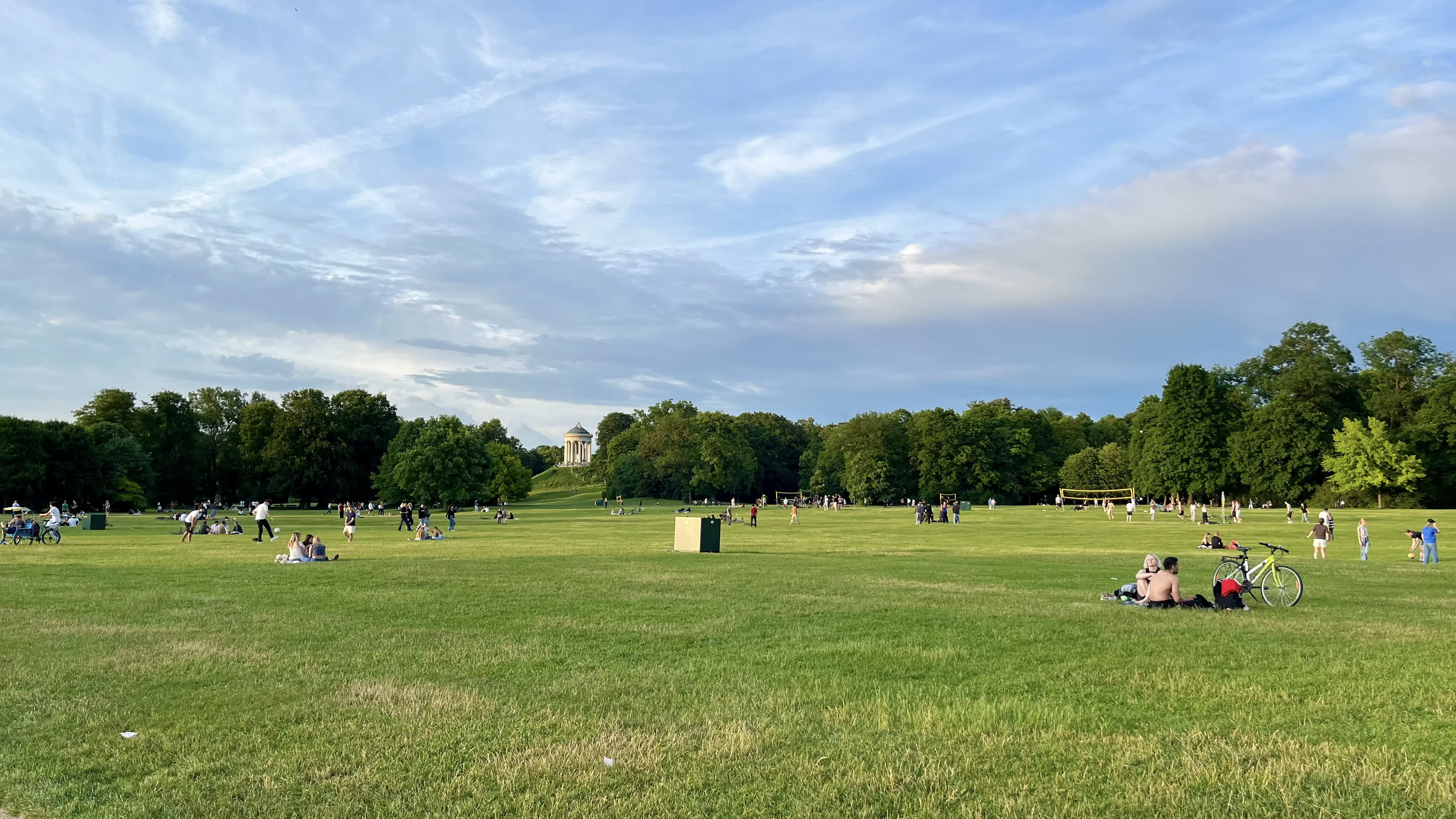
After that, we went to the Englischer Garten. It’s a great place to walk, run, or cycle. It reminded me of Planten un Blomen in Hamburg. In the Englischer Garten, you can still follow the Isar River. Because the current is strong, it’s dangerous to swim there, but my friend told me that people do group activities like standing or sitting on logs and floating down the river. Sounds like a lot of fun.
I also visited the Olympiapark. If you go up the Olympiaberg, you get a great view of the city and see the Alps. It’s also a spot where people sometimes sit and listen to concerts at the Olympiastadion. The only thing that bothered me was the building with the O2 logo. I was surprised that the city allowed it. It really stands out and ruins the view a bit. I did a quick search and found out that after that building was built, Munich had a vote to stop any new buildings over 100 meters tall. I wish they could also do something about that building now.
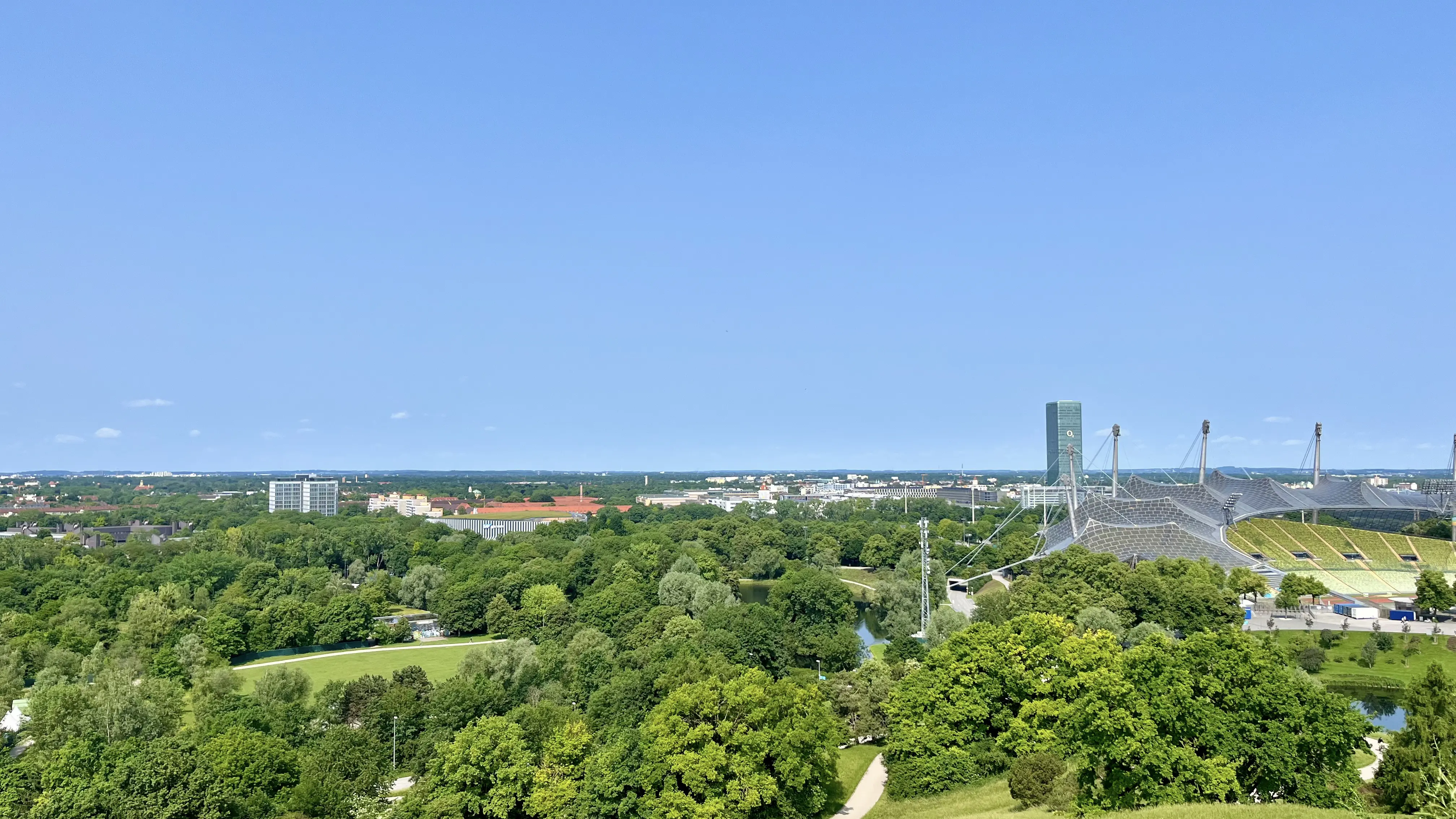
From up there, you can really see how green Munich is. But while walking around the city, I also noticed several “naked streets,” as I like to call them — streets without any trees. These streets have buildings, sidewalks, and wide roads for cars, but no trees at all. That was a bit disappointing. I had the same feeling when I visited Stockholm. In Hamburg, this is less common. You can usually find trees on almost every street. I think this is really important because trees give shade and help cool the streets, which makes walking much easier. Even though it was only about 20°C, I sometimes felt really hot walking around in the sun.
Munich has many parks, but what makes it really special is the number of lakes nearby — like Starnberger See, Ammersee, and Tegernsee. You can reach most of them with just about an hour of train ride. You can also visit Garmisch-Partenkirchen and go up to Zugspitze, the highest mountain in Germany. Since this was my first time in Munich, I decided to stay in the city, but I’m already planning a second visit to explore those places.
Even though Hamburg has the beautiful Alster Lake right in the center, it doesn’t offer as many nature spots nearby that you can reach within two hours. But at least there are lots of forests around the city, and the North Sea and the Baltic Sea are around an hour away by train. That’s something you don’t get in Munich.
Museums
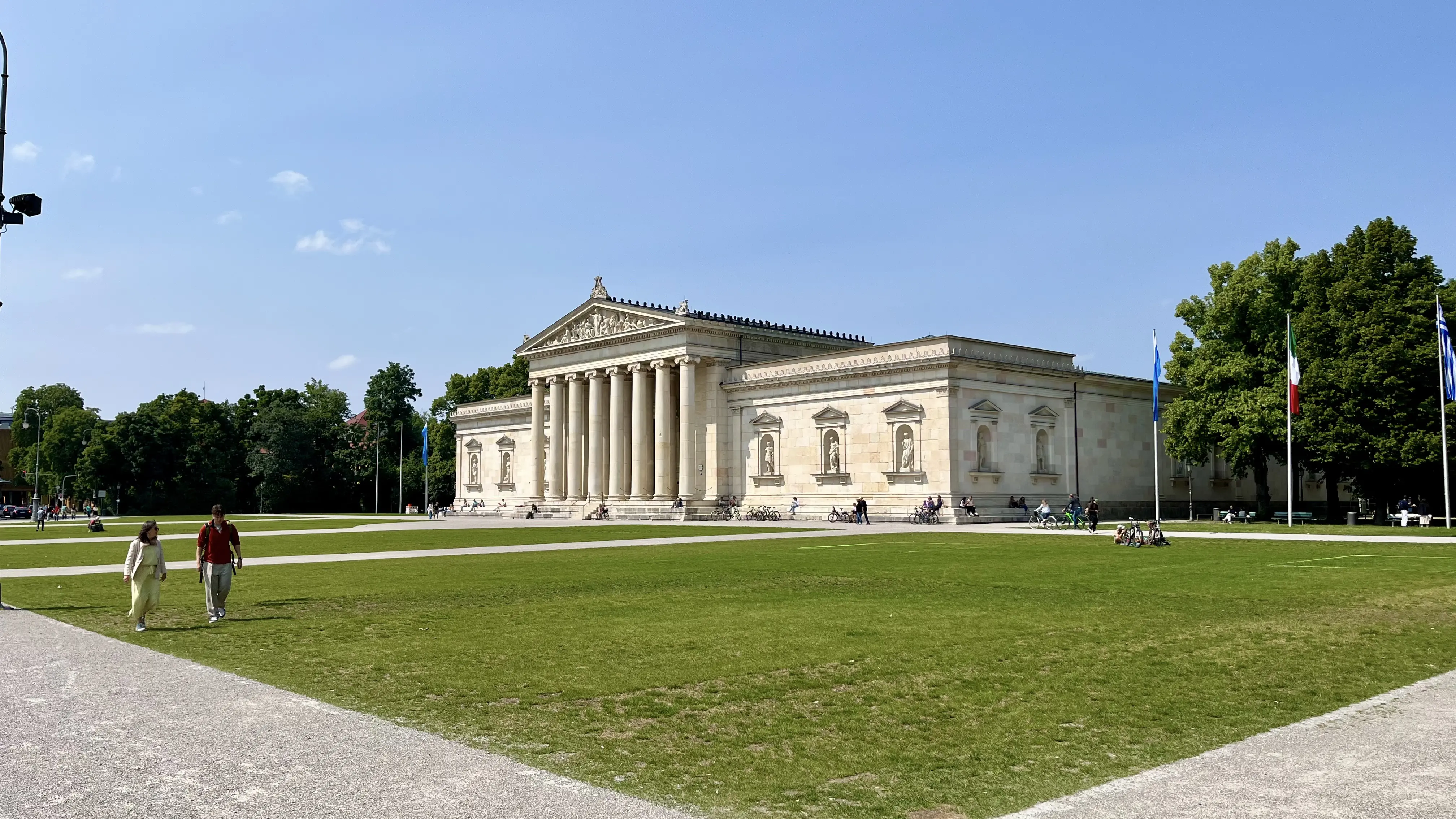
When it comes to museums, Munich has a lot more than Hamburg, at least in terms of numbers. The wealth of the city definitely played a big role in building up that collection. During my trip, I visited six museums:
- Alte Pinakothek
- Glyptothek
- Staatliches Museum Ägyptischer Kunst
- Pinakothek der Moderne
- Residenz München
- Lenbachhaus
One thing I didn’t know before buying the tickets is that some museums only charge €1 for entry on Sundays. I really liked that idea, and I hope Hamburg introduces something similar.
I also wanted to visit the Deutsches Museum, but since it’s quite large, I decided to skip it this time and focus on smaller museums so I could see more. I’ll definitely visit it during my second trip.
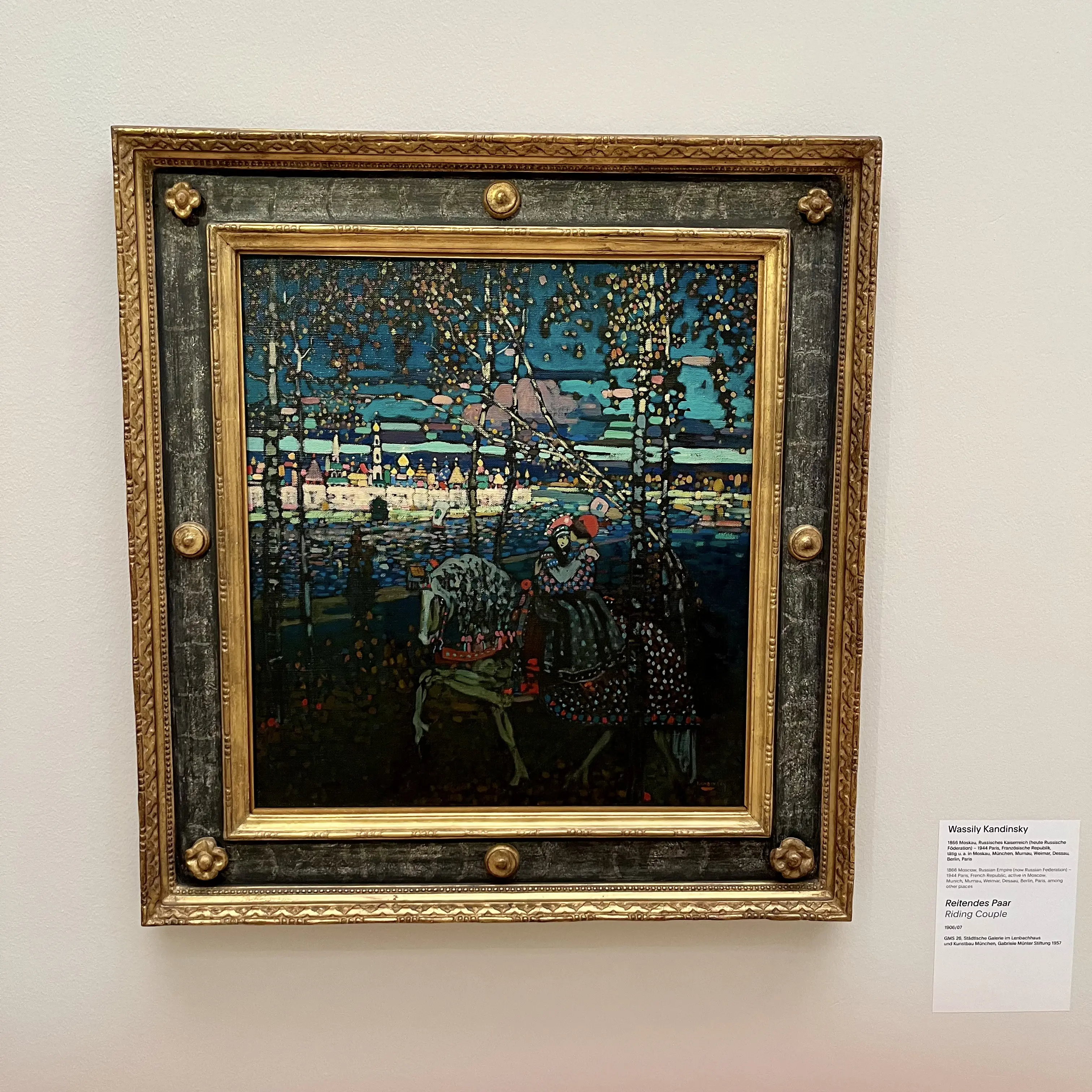
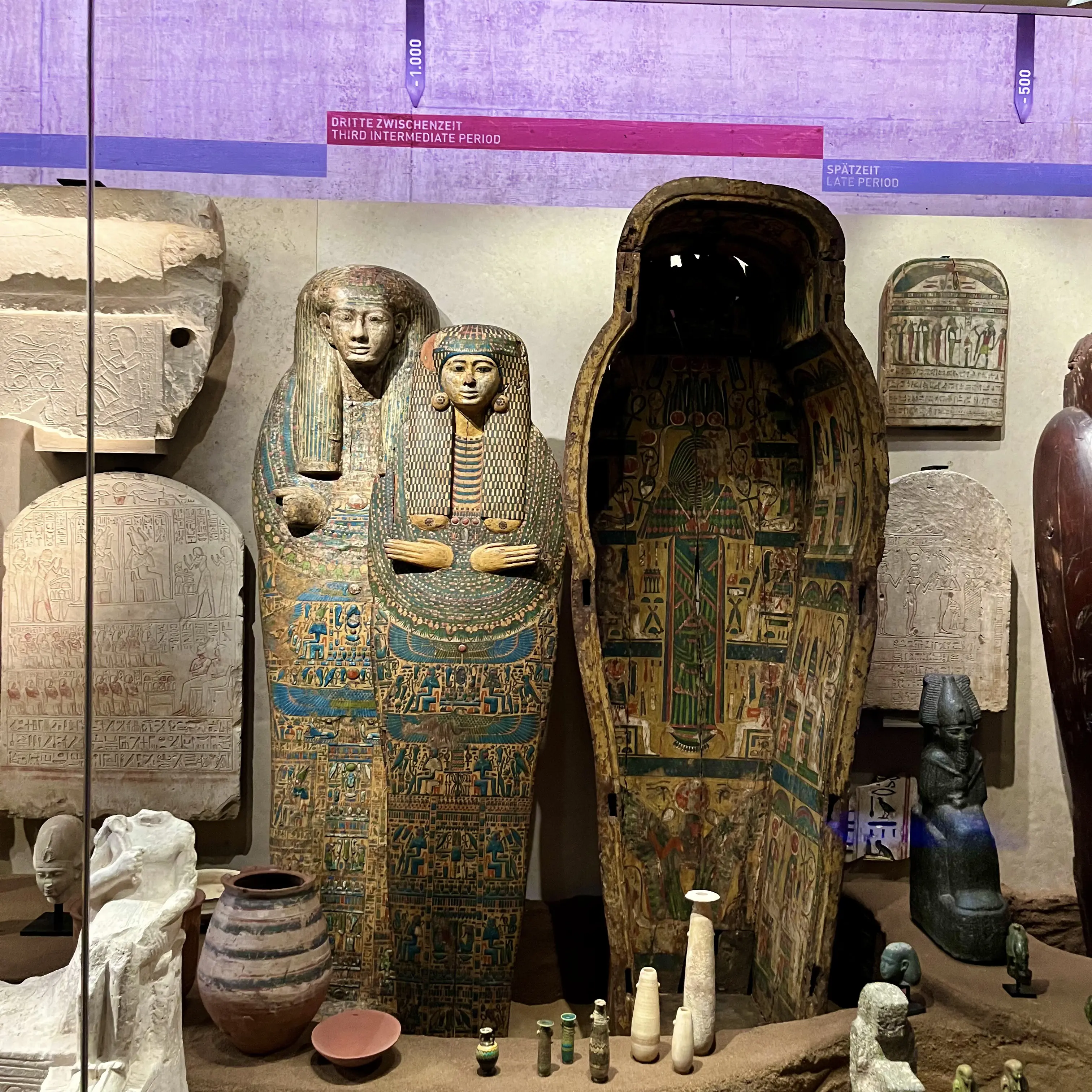

Even though Munich has more museums overall, I find the ones in Hamburg more interesting in terms of variety, at least for my personal taste. I’m thinking about places like Miniatur Wunderland, the International Maritime Museum, and Museum der Arbeit. In Munich, the paintings at the Alte Pinakothek were impressive from a technical point of view, but after a while, I got a bit bored — around 80% of them were focused on the Holy Mary and Christ. On the other hand, I really enjoyed the Residenz and the Egyptian Museum. They were more engaging for me and had a better mix of history and culture.
City Life
In general, I found Munich to be a very walkable city. The public transportation was also really good, and unlike Hamburg, it has a tram system. I actually enjoy riding trams because they move slower than the U-Bahn, so you can look around and see more of the city. On the downside, I find the tram noise and overhead cables a bit annoying. When I was in Lisbon, the noise from the trams there was awful, but overall I still think trams are an important part of good public transport.
There were two things about Munich’s transport system that surprised me. First, some train station escalators were double-sided. That means the escalator doesn’t have a fixed direction — when someone approaches, it starts moving in their direction, whether that’s up or down. I thought that was a pretty smart solution. The second thing was the buses with attachments. At first they looked strange, but I assume they add the extra section during rush hour to carry more people, and remove it later to save energy. That also seemed like a smart idea.
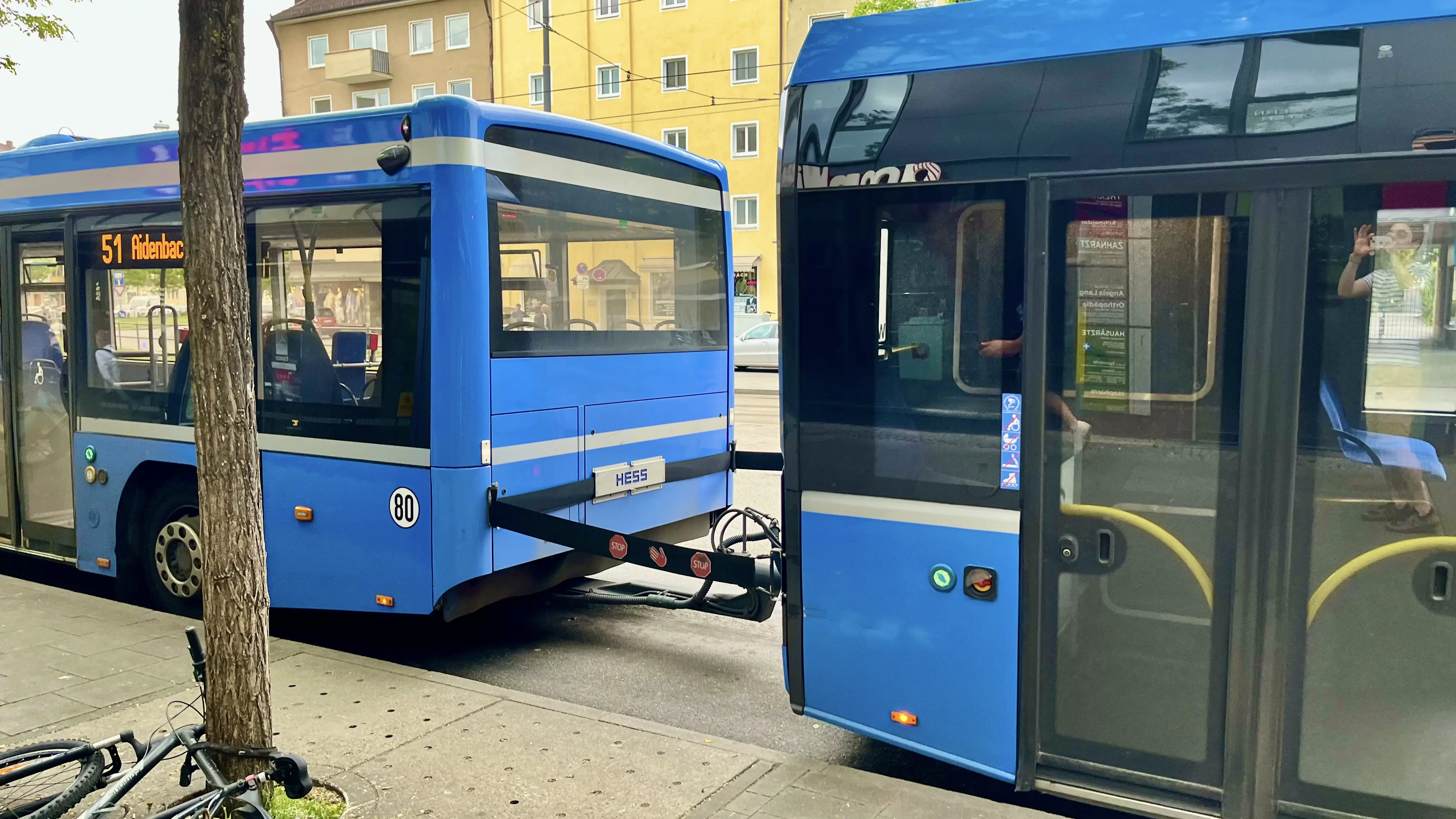
Aside from public transport, I felt Munich was a bit more car-centric than Hamburg. There were bike lanes, but not as many, and the ones I saw weren’t very noticeable. But I guess that makes sense, considering BMW is based in Munich. It was also the first time I saw those black-and-white striped prototype cars that car companies use for testing. Even without the logo, it was pretty obvious they were BMWs. The city also had a lot of long, wide streets, which I don’t like much. They’re harder to cross, reflect more heat, and just don’t look nice.
In terms of architecture, the city center had some impressive buildings — large and detailed. But the residential areas weren’t really my style. I think I’m just used to the brick expressionist buildings in Hamburg, which blend in nicely with the trees and feel more natural to me.
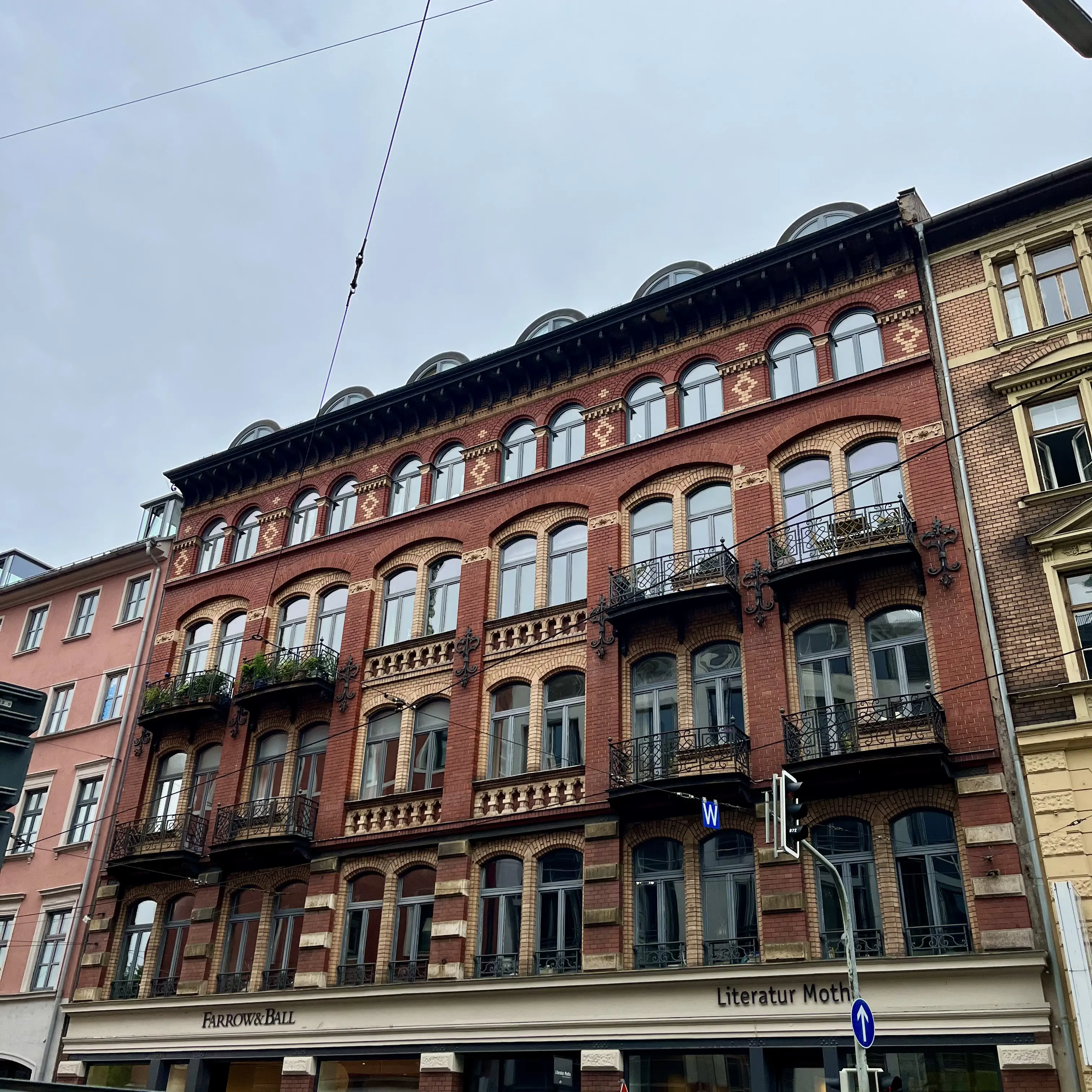
One thing I really noticed while walking around Munich was how crowded it felt. At first, I didn’t understand why — after all, Hamburg has a larger population. But then I checked the population density: Hamburg has around 2.600 people per square kilometer, while Munich has about 4.900. That explained the feeling. And if you also count the number of tourists visiting Munich, which is higher than in Hamburg, it makes even more sense. For me, this really matters. I don’t enjoy being in crowded places, and at times I felt a bit overwhelmed walking around. Luckily, the neighborhood where I was staying was calm and quiet.
One last thing I want to talk about is the food and beer. Some people don’t really like German food, but I’m not one of them. I actually enjoy trying different dishes. On my first day, I went to Haxnbauer in the city center and had Kalbshaxe (veal knuckle). It tasted really good, even though it was a bit expensive. Another day, I had Schnitzel at Andy’s Krablergarten, and I have to say, it was the best Schnitzel I’ve ever eaten.
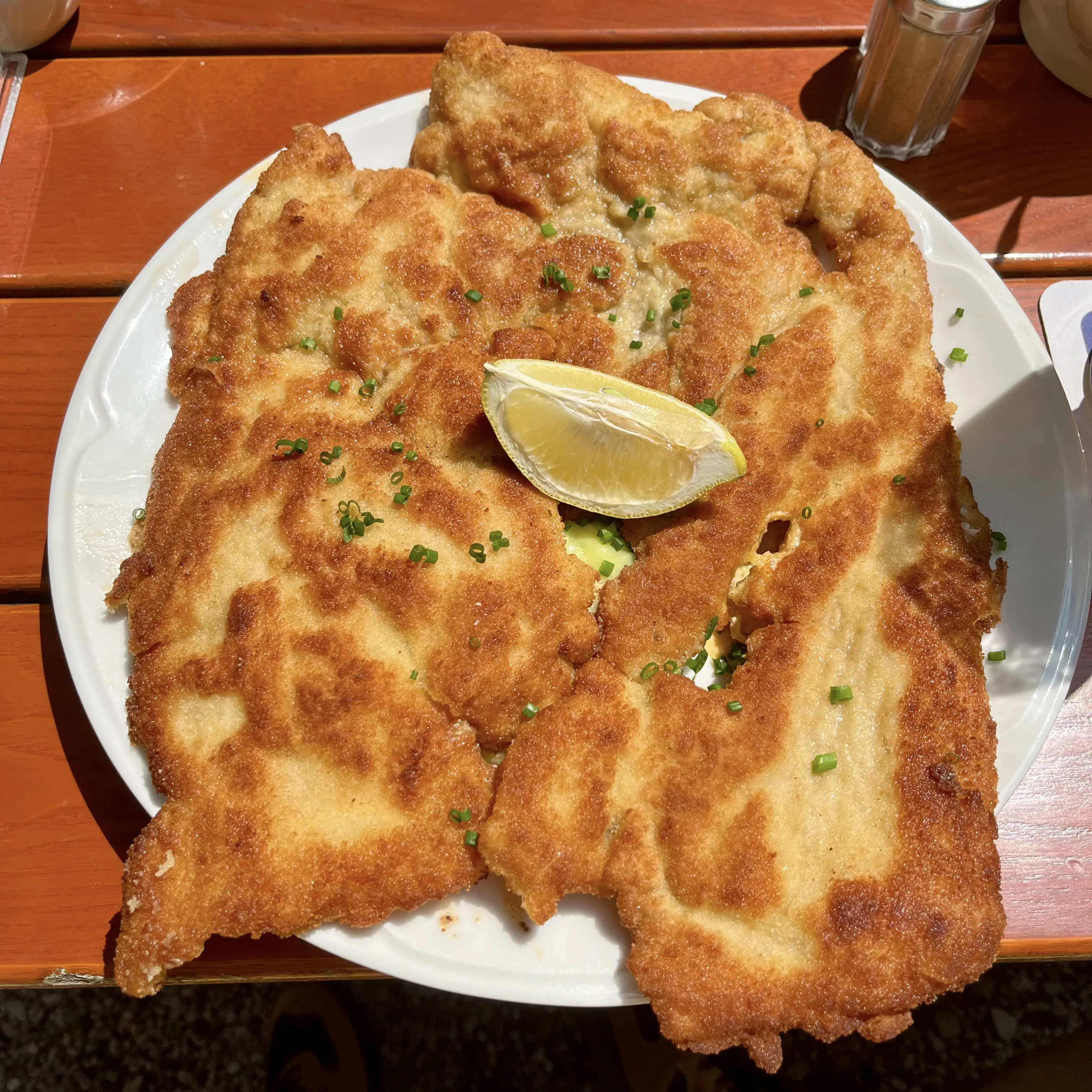
When I drink beer, I usually go for Weißbier if they have it. Most of the time it comes in a bottle, but in Munich you get it fresh from the tap—and you can really taste the difference. I know there are a few good Bavarian restaurants in Hamburg, but after this trip, I think I’ll visit them more often.
Beyond traditional German food, I also had the chance to try something feels home. Thanks to a friend’s recommendation, I discovered a nice spot in Munich called Altın Dilim, which serves tasty baklava and other Turkish desserts. Most places that sell baklava in Germany tend to overdo the sugar, but this one struck a good balance and used good-quality pistachios. That said, I wouldn’t personally recommend their baklava. Instead, if you check it out, go for the Fıstık Sarma or Fıstıklı Kadayıf, those were excellent. One thing to keep in mind: the neighborhood where this shop is located felt quite different from the rest of Munich. So be ready for a bit of a cultural shift when you visit. Hopefully, I’ll be able to find a similar spot in Hamburg someday too.
Verdict
Overall, I liked Munich. Even though it’s a German city, during my time there, it felt like I was experiencing a different culture compared to Hamburg. The number of museums and the natural spots nearby definitely made me think about visiting again.
Living in Munich also comes with some clear advantages. You’re close to places like Switzerland, Austria, and Italy, which makes it easy to travel. From what I know, big tech companies like Apple, NVIDIA, and Google have offices there, and the startup scene is much stronger than in Hamburg. So, if you work in tech, there are definitely more opportunities.
That said, because of the cultural differences, the car-focused layout, and the higher population density, I don’t think I would enjoy living there — at least not as much as I enjoy Hamburg. But who knows where life will take me.

